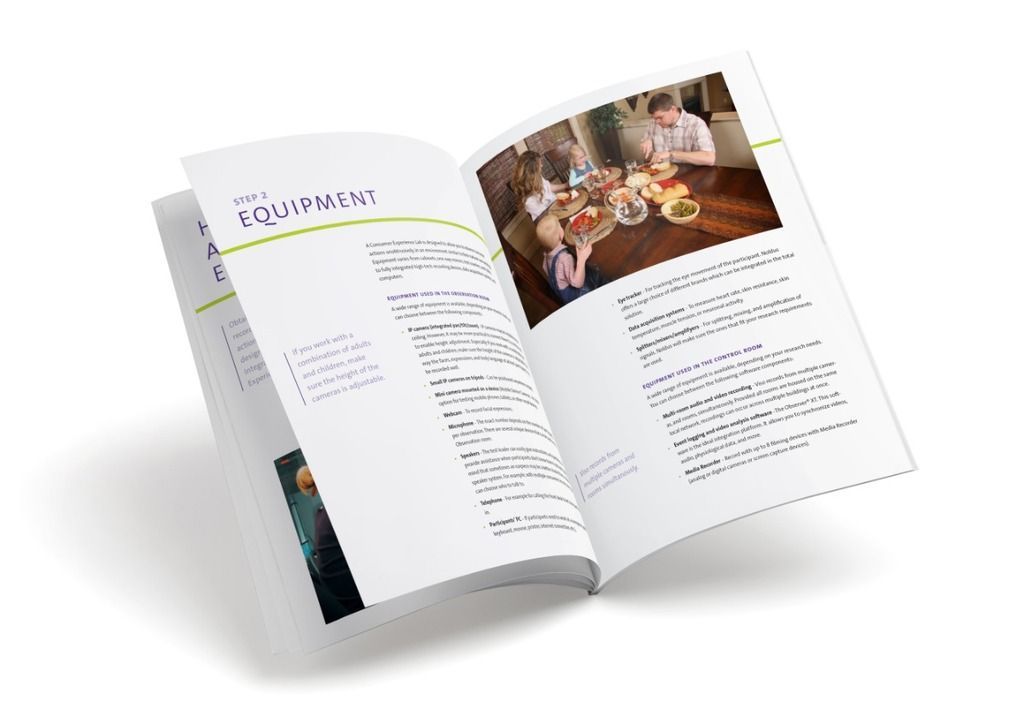Declared vs revealed data

How do consumer researchers get valuable data? Consumer and market researchers can turn to observation and experimentation to observe consumers. Declared vs. revealed data.
Posted by
Published on
Thu 02 Jun. 2016
How much do you like a store’s logo? When do you moisturize? How often do you buy new razor blades? Where in your refrigerator do you store eggs?
These are exemplary questions to which consumer researchers badly want to know your answers. Liking leads to buying, so how much you like the logo can influence you going to that store over a competing one. When you moisturize, and how much, can influence the type of moisturizer you buy and how often you buy it; the same goes for razor blade usage. And if an appliance company spends the time to design the interior of a refrigerator with a specific use in mind, it is desirous for them to know if consumers actually use the refrigerator that way!
Traditional methods in consumer research
So, how do consumer researchers get at these valuable answers? The traditional methods include interviews, surveys, and focus groups. With these, consumers can answer honestly and accurately…or can they?
All of these mechanisms fall under the heading of self-report – consumers provide answers directly to researchers about their habits and practices. These studies could be done in a variety of ways, each of which have pros and cons:
Method | Pros | Cons |
Surveys |
|
|
Focus Groups |
|
|
Interviews |
|
|
Consumer and market researchers have to decide which of these is right for them, based upon the type of study being conducted.
Self-reporting bias
Once that choice is made, there are some biases that are inherent with any self-report. Two types tend to come to the forefront1:
- Unintentional reporting bias: participants forget about their purchasing habits, and so fail to report them accurately.
- Intentional reporting bias: participants want to be seen in a favorable light, so they aren’t fully truthful regarding their purchasing habits.
With both of these biases, consumers aren’t intending to mislead researchers, but for either (or both) reasons, they’re unable to fully explain their habits.
Further impacting the use of self-report is evidence that consumers are not always aware of why they purchase a specific good, or even what happens during the purchase process. Often purchases occur out of habit and routine, or while the consumer is distracted, so accurate self-reporting can be difficult. Failures in self-report don’t just occur in consumer research – in many areas, people are unable to accurately report on their habits2.
Declared vs revealed data
When self-report fails, what can researchers do? One option is to look at actual consumer behavior. Why do we, as market researchers, want to get into anything as difficult as measuring behaviors? There are two main reasons.
- Actions speak louder than words.
- Behavior does not always match what people think they will do.
Observation and experimentation
Knowing this, consumer researchers can turn to observation and experimentation to observe consumers as they obtain, consume, and dispose of products and goods.
Let’s assume a consumer states in a focus group, or on a survey, that she likes Brand X’s yogurt and plans to buy it. The question then becomes: when she’s in a store, does she actually BUY Brand X’s yogurt? Or does the new packaging of Brand Y, which she previously overlooked, now jump out to her and she buys Brand Y yogurt instead? By observing a consumer as she is shopping, market researchers can better understand decision making that happens at the shelf.
Similarly, a skin care company has received self-report data that women of a certain age group find moisturizer to be very important to their daily skin care routine…yet these women are not buying moisturizer at the rate that would be expected from daily use. How do researchers delve further into the skin care routine if self-report data isn’t reliable? The only real way is through actual behavioral observation; to record and note what behaviors women engage, in their homes, related to skin care.
Observing consumer behavior
Observing behavior, in a store or in the home, can allow researchers a better look into what consumers actually do, and not just what they say they will do. There are pros and cons with this methodology as well:
Pros | Cons |
|
|
Again, consumer researchers need to assess these pros and cons prior to conducting an observational study.
But what about trying to influence the consumer before she ever makes a purchase? In our example above, what did Brand Y do to get the consumer to notice them, when previously she was a Brand X loyalist?
Self-report vs. observational research
Here is where consumer researchers can turn to experimentation. There are many methods that can be put into place3, and this includes going back to self-report. If we want to ask someone whether they like a product’s packaging, we can do that – simply ask. The consumer can then rate the package on a scale (let’s say 1-5, 5 being the best), and we can compare that to the rating of a competitor product.
But what happens when the researcher asks the consumer “Why did you rate Brand X as higher?” and the answer comes back “I don’t know”? Here is where self-report fails, and behavioral observation can only shed a tiny amount of light. In these situations, it’s better for the market researcher to focus on the unconscious motivators of behavior, and the best place to start is by looking at emotion4.
Declared vs revealed data
Applying emotion research properly can provide researchers with a very powerful tool. Understanding how emotions affect the decision making process arms marketers with a wealth of information. Indeed, advertising researchers continually take advantage of our emotions: they include cute animals and babies; remind us of when we were kids; condition us to certain jingles, etc – all of which is designed to create an emotional bond between the consumer and the product.
Being able to accurately measure consumer emotion provides insights that would be hidden if researchers were to only use self-report. In one example, we were tasked by a shaving company to examine emotional reactions while using premium and non-premium razors – how are consumers reacting to these razors during product use? Is this even a valid way to assess “likeability” of a razor?
By assessing facial emotions as women shaved their legs, we obtained deeper insights than via self-report alone. One respondent self-reported similar feelings of “liking” for each razor type in the post-usage assessment, but during use she actually cut herself with the premium razor and expressed negative emotions on her face that she did not verbalize - the depth of her negative emotions during usage could not have been assessed from self-report alone.
Actually measuring consumer behavior, which can range from taste tests to shopper behavior to usage in the home, provides additional insights that, often in combination with standard measures of self-report, provides consumer researchers with a better look into the consumer as a whole.
And, as a way of showing how in-the-moment emotion assessments can work in real-world contexts, check out this video below.
References
- http://blogs.bmj.com/injury-prevention/2015/06/14/self-report-versus-observation/
- http://www.ncbi.nlm.nih.gov/pmc/articles/PMC2588639/
- https://www.youtube.com/watch?v=dN5lpRWms8I&index=2&list=PL84g9FUImokBT5Rio-5cCw7kP2igA2bia
- http://www.quirks.com/articles/2016/20160508.aspx
Related Posts

Facing the food of the future

Top 5 Consumer behavior research on the Behavioral Research Blog

